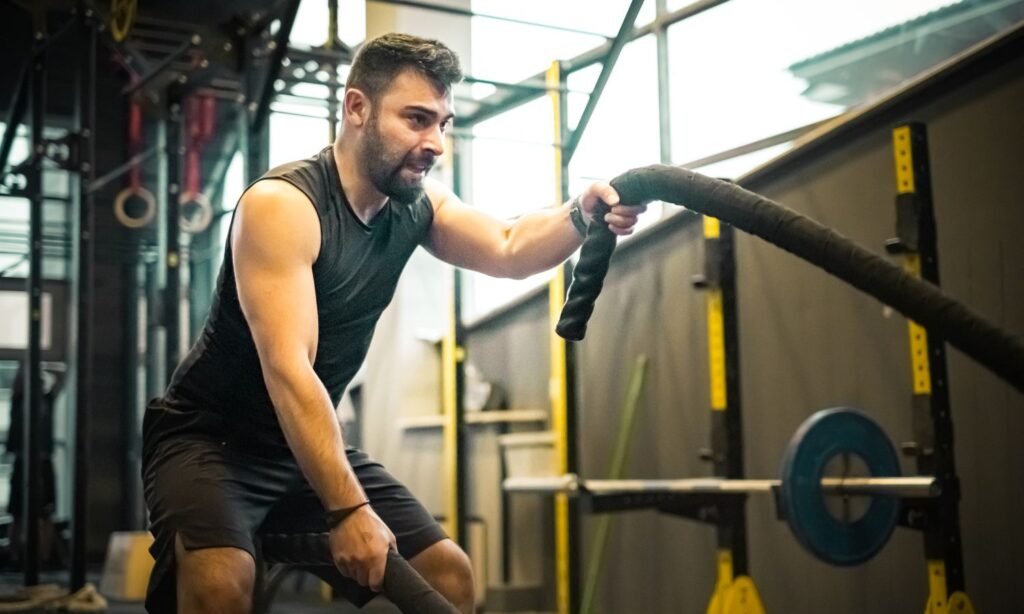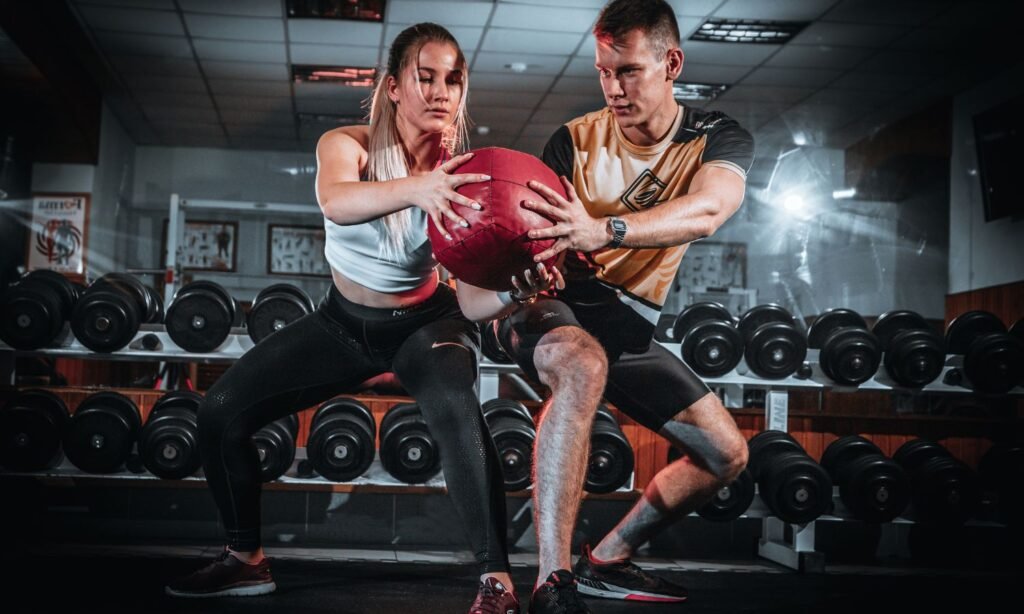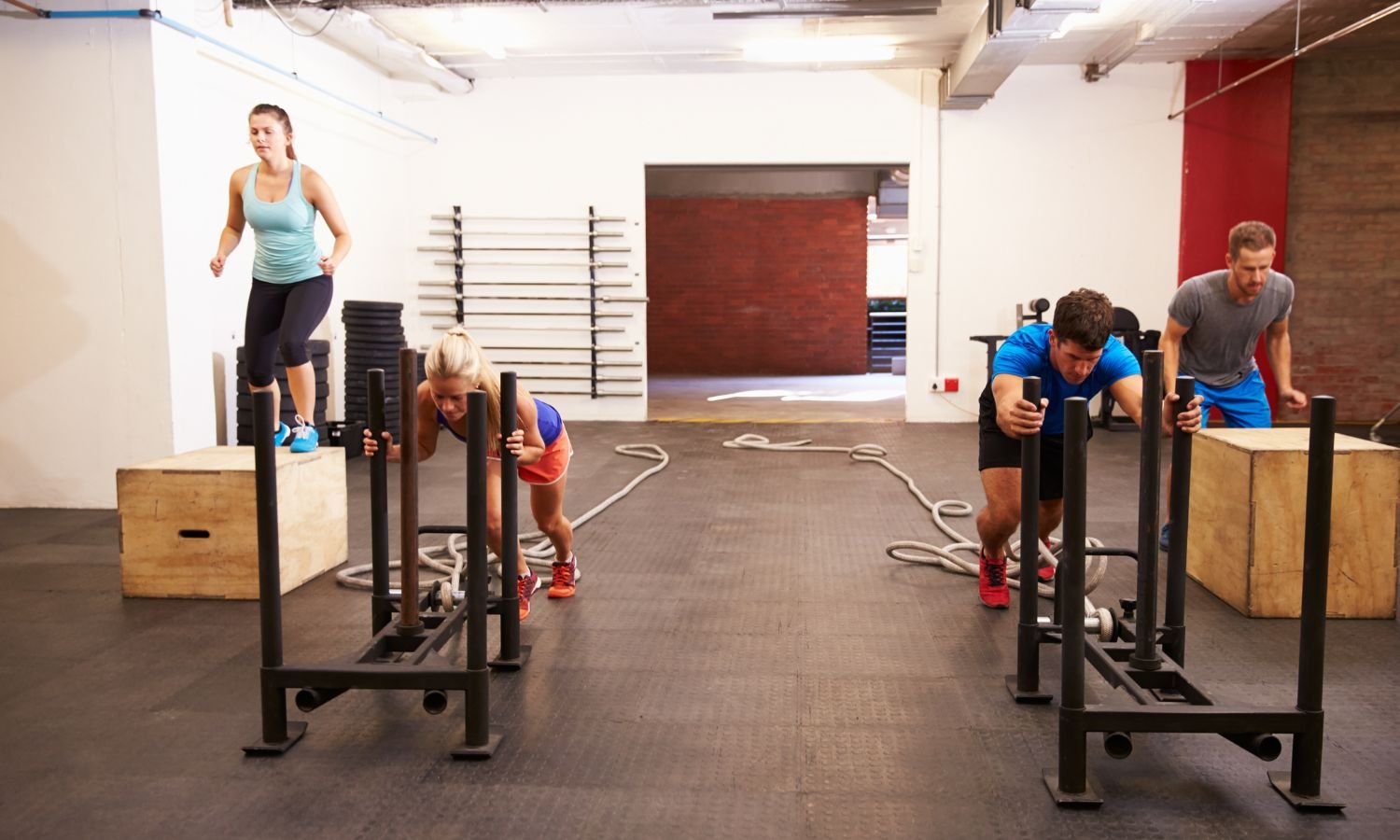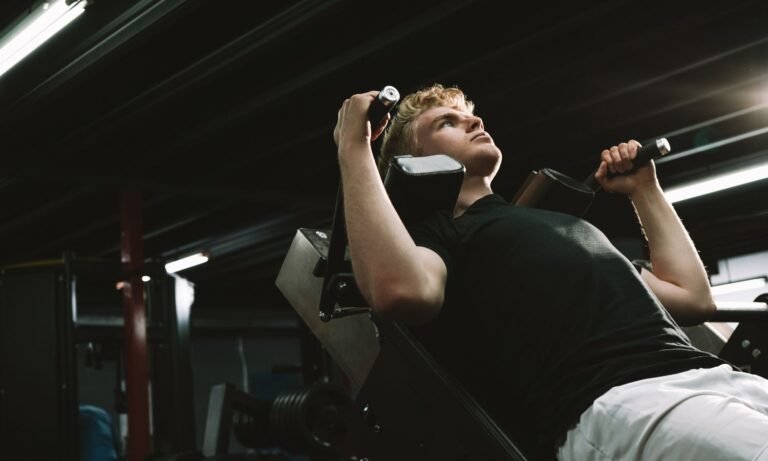Improving your cardio fitness without running isn’t just possible—it’s a game-changer for anyone looking to switch things up, reduce joint stress, or simply find workouts they genuinely enjoy. Whether you’re new to fitness or a seasoned pro, exploring these alternatives can lead to a healthier, stronger you.
How Does Your Cardiovascular System Work?
The cardiovascular system is responsible for delivering oxygen-rich blood from the lungs to the muscles and returning oxygen-depleted blood back to the lungs for reoxygenation. It consists of the heart, blood vessels, and blood, working together to support physical activity by meeting the oxygen demands of the body. VO2 max measures how efficiently this system operates during intense exercise—how well the heart pumps blood, how effectively blood vessels transport oxygen, and how efficiently muscles utilize it. A higher VO2 max indicates a stronger, more efficient cardiovascular system capable of sustaining higher levels of physical exertion.
How VO2 Max Affects Your Cardiovascular System
VO2 max is a measure of the maximum amount of oxygen your body can utilize during intense exercise. It is an important indicator of cardiovascular fitness and overall endurance. Essentially, VO2 max reflects how efficiently your heart, lungs, and muscles work together to deliver and use oxygen during physical activity.
The higher your VO2 max, the better your body is at supplying oxygen to your muscles and sustaining physical effort over time. This directly impacts your cardio performance, as activities like running, cycling, or swimming rely on your aerobic capacity. Improving your VO2 max can enhance stamina, allowing you to exercise at higher intensities for longer periods before fatigue sets in. It can be improved through consistent cardio training, particularly high-intensity interval training (HIIT) or sustained aerobic activities, as these challenge and expand your oxygen delivery system.
Improving Your VO2 Max Will Improve Your Cardio
Improving your VO2 max involves not only traditional cardio training but also incorporating breath work and other complementary methods to enhance your body’s oxygen utilization. Here’s how:
- Breath Work and Diaphragmatic Breathing: Practicing deep diaphragmatic breathing improves lung capacity and the efficiency of oxygen exchange. Techniques like belly breathing, pranayama (yoga breathing exercises), or even breath-hold training can strengthen respiratory muscles and increase oxygen intake.
- High-Intensity Interval Training (HIIT): Alternating between short bursts of intense activity and recovery periods trains your heart and lungs to adapt quickly, boosting your VO2 max over time.
- Altitude Training or Simulated Oxygen Therapy: Training at higher altitudes (or using equipment that simulates it) exposes your body to lower oxygen levels, forcing it to become more efficient at using oxygen. This adaptation can increase your VO2 max when you return to normal oxygen conditions.
- Resistance Training: Adding resistance or weight training can indirectly improve VO2 max by increasing the efficiency of oxygen use in your muscles, especially when performed in a high-rep, low-rest format.
- Nutrition and Hydration: Proper fueling with nutrient-dense foods and staying hydrated ensures your muscles and cardiovascular system operate at their best. Foods rich in iron and nitrates (like leafy greens and beets) can enhance oxygen transport and utilization.
- Consistency and Progressive Overload: Regularly challenging your cardiovascular system with slightly more effort, such as longer sessions or increased intensity, will gradually improve your VO2 max.
- Recovery and Rest: Adequate recovery, including quality sleep and active recovery days, ensures that your body can adapt and improve from the stresses of training, ultimately enhancing VO2 max.
Benefits of Improving Cardio Without Running
Switching up your cardio routine can unlock new opportunities for health and fitness. You’re not tied to pounding the pavement—there are plenty of options that deliver incredible results.
Reducing joint impact while maintaining fitness
Running can be harsh on your knees, ankles, and hips, especially if you’re pounding the pavement daily. Choosing low-impact alternatives like swimming or cycling reduces the stress on your joints while still giving your heart a solid workout.
Expanding exercise variety for better results
Mixing it up keeps things exciting. When you vary your cardio workouts, you’re engaging different muscle groups, improving overall fitness, and avoiding the dreaded plateau.
Adapting cardio routines for all fitness levels
Not everyone’s ready to sprint up hills. With alternatives like elliptical training or dance cardio, you can tailor workouts to match your current fitness level and scale as you improve.
Alternative Cardio Exercises To Do In Your Gym to Running

If running isn’t your thing, don’t sweat it—there are tons of effective cardio exercises to choose from. Here are some favorites that fit any lifestyle or fitness goal.
Cycling: Low-impact and high-efficiency
Cycling’s perfect for cardio without the joint strain. Whether on a stationary bike or hitting the road, you’re working your legs, building endurance, and even getting a mental boost from the ride.
Swimming: Full-body cardiovascular exercise
Swimming doesn’t just work your heart—it’s a full-body workout that’s easy on your joints. Plus, it’s a refreshing way to stay fit during those scorching summer months.
Rowing: Combining strength and cardio
Hop on a rowing machine to get your heart pumping while also strengthening your arms, back, and core. It’s an efficient way to double up on cardio and resistance training.
Elliptical training: A joint-friendly alternative
Ellipticals mimic the motion of running but without the impact. They’re great for steady-state cardio or HIIT sessions, and they’re easy on the body.
HIIT Training
High-Intensity Interval Training (HIIT) involves alternating between short bursts of intense activity and rest periods, offering an effective way to boost cardiovascular health without running.
Circuit Training
Combining strength and cardio exercises in quick succession during circuit training keeps your heart rate elevated and builds endurance in a dynamic, running-free workout.
Battle Ropes
Using battle ropes for a variety of wave and slam movements engages your whole body and provides an intense cardiovascular workout.
Ski Machine
The ski machine mimics cross-country skiing, offering a low-impact cardio alternative that works both your upper and lower body.
Low Weight, High Repetition Weight Training
Performing weightlifting with lighter weights and higher repetitions keeps your heart rate up and builds muscular endurance, making it a great cardio substitute.
Jump rope: Compact and effective cardio
Jump ropes aren’t just for kids. This portable workout tool offers a killer cardio session that’s fun and efficient—perfect for squeezing in fitness anytime, anywhere.
Stair climbing: Building endurance and strength
Climbing stairs boosts your heart rate while also working your legs and glutes. It’s a simple yet powerful way to get fit, whether you’re at the gym or at home.
Playing A Competitive Sport For Cardio

Using team or competitive sports like football, boxing, tennis, or rugby as your cardio workout can be a game-changer for improving fitness without running. The competitive element often motivates you to push harder than you would during a solo workout, as the drive to win or perform well adds intensity to your effort. Many people also find these sports more enjoyable than monotonous street running, making it easier to stay consistent and achieve long-term results. Additionally, playing with friends or as part of a team introduces a social dynamic that can boost morale and make workouts feel less like a chore. The sense of accountability to your teammates can also keep you from skipping sessions, as you won’t want to let the group down. This combination of enjoyment, competition, and camaraderie makes team sports an excellent alternative for improving cardio fitness.
Personal Training With A Friend

Training with a personal trainer alongside a friend offers a cost-effective and motivating way to improve your fitness. Splitting the cost makes professional coaching more affordable, allowing you both to benefit from expert guidance tailored to your goals. The presence of a friend adds a competitive element to your workouts, pushing you to perform at your best and achieve more than you might on your own. Moreover, working out with a friend provides additional accountability—you’re less likely to skip a session if you know someone else is counting on you to show up. With the support of a professional trainer, you’ll also ensure proper technique, receive structured programming, and stay on track to achieve long-term results, all while enjoying the camaraderie of a shared fitness journey.
Creating an Effective Cardio Routine Without Running
Now that you know the options, it’s time to craft a plan that’ll keep you moving and motivated.
Setting clear fitness goals
Before jumping in, decide what you want to achieve. Is it weight loss, endurance, or just staying active? Having a goal helps you stay on track and measure progress.
Choosing exercises based on personal preferences
Pick activities you enjoy—you’re more likely to stick with them. Whether it’s cycling, swimming, or dancing, find what gets you excited to move.
Balancing intensity and duration
Balance is key. Aim for a mix of moderate and high-intensity workouts to keep your heart healthy and your routine engaging.
Incorporating interval training for maximum benefits
Short bursts of high-intensity effort followed by rest periods maximize calorie burn and build endurance. Try adding intervals to cycling or elliptical sessions.
Tracking progress to stay motivated
Use apps, wearables, or good old-fashioned journaling to track your workouts. Seeing progress keeps you motivated and focused.
Tips for Maximizing Cardio Results Without Running
Making the most of your workouts doesn’t have to be complicated. These tips will help you crush your fitness goals.
Maintaining proper form to avoid injuries
Good form is everything. Whether you’re rowing or jumping rope, focus on technique to prevent injuries and get the most out of your sessions.
Staying consistent with your routine
Consistency beats intensity every time. Stick to a regular schedule, even if it’s just 20 minutes a day.
Using wearable technology to monitor heart rate
Wearables give you real-time feedback, helping you stay in your target heart rate zone and track improvements.
Pairing cardio with strength training for overall fitness
Cardio gets your heart pumping, but don’t skip the weights. Strength training builds muscle, boosts metabolism, and enhances overall fitness.
Nutrition and Recovery for Cardio Workouts
Great workouts start with proper fuel and end with recovery. Here’s how to keep your body running smoothly.
Importance of a balanced diet for energy
Fuel up with a mix of carbs, proteins, and healthy fats to keep your energy levels high during workouts and aid recovery after.
Hydration tips for sustained performance
Stay hydrated—dehydration zaps energy and affects performance. Keep water or electrolyte drinks handy during and after exercise.
Post-workout recovery strategies
Recovery matters as much as the workout itself. Stretch, foam roll, or do yoga to ease sore muscles and improve flexibility.
Managing muscle soreness effectively
Soreness happens, but it shouldn’t stop you. Light activity, hydration, and proper nutrition help reduce discomfort and speed up recovery.
FAQ
What are the best low-impact cardio exercises?
Low-impact exercises like swimming, cycling, and walking protect your joints while improving cardiovascular health. These activities are ideal for maintaining fitness without the strain of high-impact workouts.
Can I improve my cardiovascular health without running?
Yes! Cardio fitness can be enhanced with activities like rowing, elliptical training, or even dancing. These exercises strengthen your heart and improve endurance without the need to run.
How long should a cardio session last?
For optimal benefits, aim for 30 to 60 minutes of cardio per session. The duration depends on your intensity levels and overall fitness goals, whether it’s endurance, fat loss, or general health.
Is swimming better for cardio than running?
Swimming is a full-body workout that’s gentler on your joints, making it an excellent alternative to running. It’s particularly effective for building endurance and improving overall cardiovascular health.
How can I track progress in cardio workouts?
Track progress by using fitness apps, wearable devices, or keeping a workout journal. Monitor metrics like duration, intensity, and improvements in endurance to stay motivated and on track.
Conclusion
Improving your cardio fitness doesn’t have to involve pounding the pavement. By exploring fun, low-impact alternatives like swimming, cycling, or dancing, you can protect your joints, enjoy diverse workouts, and achieve your fitness goals. With a clear plan, proper recovery, and consistency, you’ll build a stronger heart and a healthier body—all while keeping things fresh and enjoyable. Start experimenting with these workouts today, and find the routine that works best for you!




